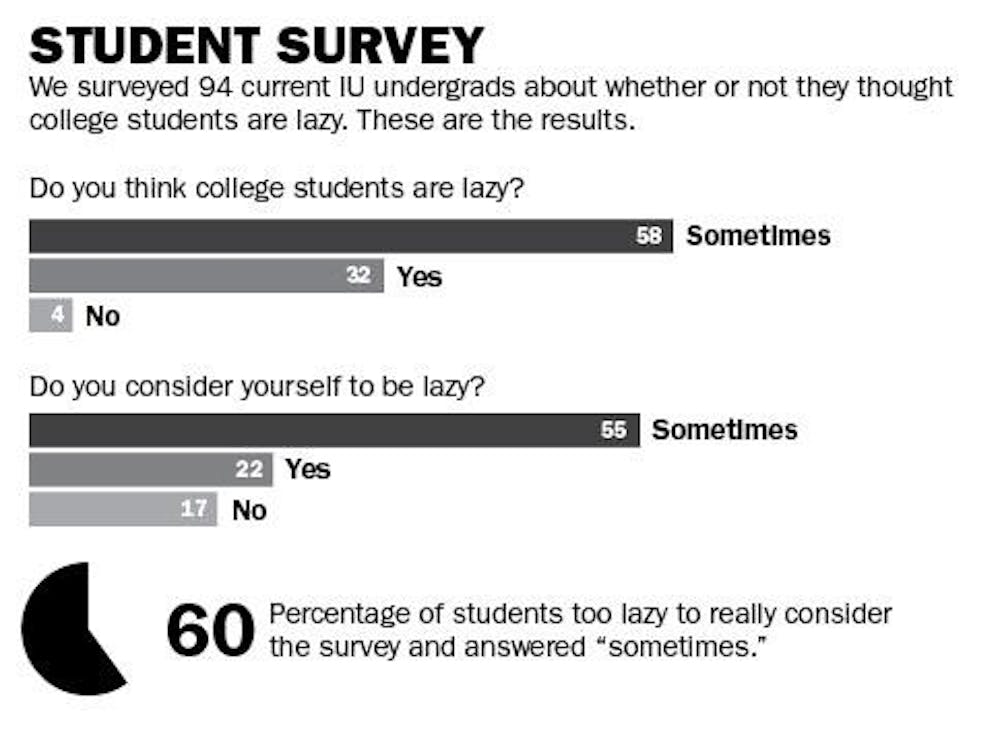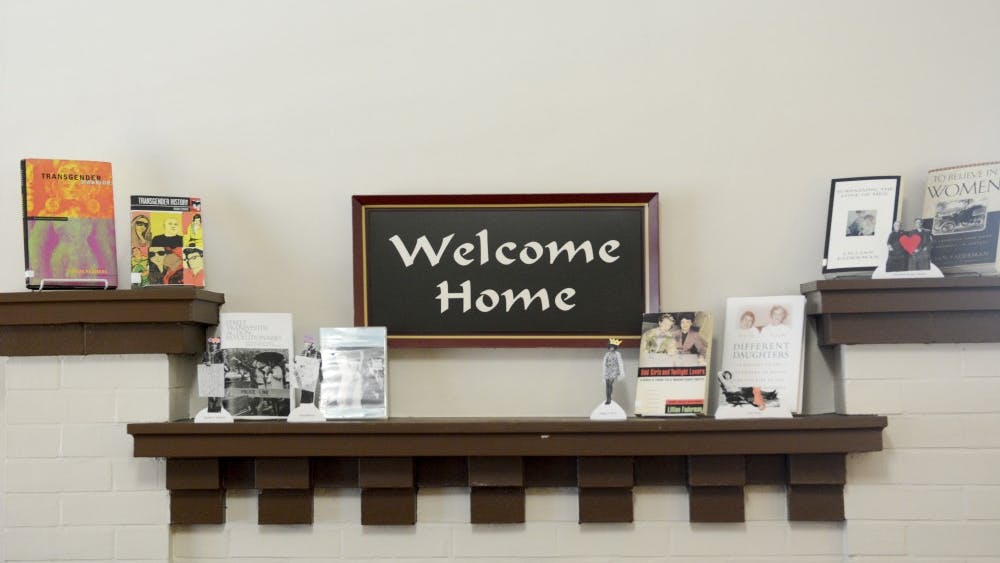It’s 6:30 p.m. on a Tuesday and Union Board president Jared Thomas has been in a suit for hours — and we’re not talking about the kind you wore during spring break. Jared stops for a few minutes in the busy Union Board office after attending a reception for the unveiling of a Little 500 trophy in the Indiana Memorial Union.
Between the 25 hours per week he spends in the Union Board office and his 14 credit hour course load, he says it’s finding the time to eat that can be a problem.
As a junior, Jared was born in 1991 — right smack in the middle of the recently-named millennial generation. Classified by the Pew Research Center as the segment of the population born between 1980 and 2000, they — well, we — are described as the first to “come of age” in the new millennium.
We were the first ones to spend their mornings playing Gameboys on the bus ride to elementary school, the first ones to stay up late chatting on AOL Instant Messenger, the first ones to squish into tiny bathrooms for MySpace photo shoots. And now, the first ones to spend days lying in bed and watching all nine seasons of “How I Met Your Mother”
on Netflix.
So, with all of this snap-of-the-fingers-access, it begins to beg the question: Are we lazy?
The millennials are also the first generation to spend more time on the Internet than watching television, and the first generation to see rising rates of early on-set obesity-related diseases.
In a Gallup Poll released in April 2012, 59 percent of young adults between 18 and 29 reported they felt they spent too much time on the Internet, 58 percent said they felt they spent too much time on their cell phones, and 48 percent said they spent too much time using social media sites.
But how does this compare to a student on IU’s campus?
“Well, my Mondays, Wednesdays, Fridays, and Thursdays are pretty busy,” senior exercise science major Carly Scheid says.
A typical day for her begins at 6:30 a.m. She wakes up to get ready for her four classes that day, which begin at 8 a.m. After her 1 p.m. class she’ll typically stop at home, before going to the gym.
From there she’ll go on to her biology professor’s office hours, then back home for dinner before spending the rest of her night at the library studying.
So, couch potatoes? Carly disagrees. “I feel like that’s what a lot of people in different generations think about the younger one,” Carly says. “I feel like I personally work really hard.”
Seating is limited inside the waiting room on a Wednesday afternoon at the Career Development Center. And while more than half of students the building on North Jordan Avenue serves have majors within the College of Arts Sciences, students also come from the Kelley School of Business, the School of Public and Environmental Affairs, and other schools across campus to receive career guidance.
Patrick Donahue, Career Development Center Director, notes the increase of student appointments within the Career Development Center since the 2003-2004 school year when the center began keeping records. They’ve gone from around 9,700 student contacts to more than 16,000 in 2011-2012.
Donahue meets with students daily to help them find internships, prepare for interviews, and perfect their resumes. He’s worked in career advising for almost 20 years, and he says students are working as hard as, if not more, than they did two decades ago.
“My gosh, they’re not lazy,” he says. “You all are working part-time jobs, you’re doing classes, you’re studying, you’re busier than anyone else is because you’ve been told these are the things you have to do.”
Rather, he says it’s more that the modes of communication have changed within the job search process.
“When you have a generation who is hiring, who is accustomed to one form of communication, and then you have a generation that’s coming up that’s used to another form of communication, how does that work?” he asks. His job is to help students bridge that gap with potential employers. But he says for the most part, the students he sees are still willing and eager to make these concessions.
“The truth is that my generation needs to adapt and say, ‘Here are the great things about social media. We need to adapt these forms and use social media within our organization.’”
Professor Rae Sovereign is currently teaching several online topics courses within the department of labor studies, and because students don’t have to come into the classroom, she teaches “traditional” college students as well as non-traditional students in their 30s and 40s.
“I don’t consider any worker that sits behind a desk and does a full eight hours of work, and works for a wage and has to deal with muscular-skeletal problems because of sitting,” she says. “I don’t consider that to be lazy. Just because somebody’s not out in the field plowing and doing manual labor doesn’t mean they’re lazy.
“It just means that they’re doing a different kind of work and that all work has dignity and should be respected.”
Amidst the Ping Pong tables and autographed concert posters, the Union Board office is bustling with activity on this Tuesday evening. Before hurrying off to the Sandra Fluke panel in the Whittenberger Auditorium — Jared says he likes to attend as many Union Board programs as possible to support his fellow directors — he comments that labeling a generation lazy isn’t completely accurate.
“I think it depends on the person honestly,” Jared says. “I think it comes down to more personal drive and motivation.”
Are We Lazy?

Get stories like this in your inbox
Subscribe





